WORDS BY KELSEY VERBOOM | SEPTEMBER 17, 2020
If you were anywhere near the CMH heli-pad in Parson, BC, on August 5, you might’ve done a double-take.
You would’ve spotted 50 people wearing masks — some lugging ski gear in the blazing 25°C (77°F) heat — arranged in an evenly spaced line about to board a waiting helicopter.
Ummm, hold up. It’s the middle of a global pandemic and there’s a large group of people going heli-skiing in the dead of summer?
Yes. Well, sort of.
This summer, CMH successfully executed the largest trip simulation of its kind in the heli-ski industry. With rigorous COVID-19 safety protocols in place, we flew 50 of our staff to the iconic Bobbie Burns to practice every single step of a regular-season ski trip.
In doing so, we wanted to answer one burning question: could we execute a 2020/21 ski season with these safety protocols in place while still giving guests the same incredible experience we normally deliver?
The short answer? A big, fat, powder packed, yes.
The long answer? As with most things that are good and worthwhile, it’s a little more complex. Read on for an exclusive behind-the-scenes glimpse at what our staff discovered, and what a heli-ski trip during COVID times could look like.
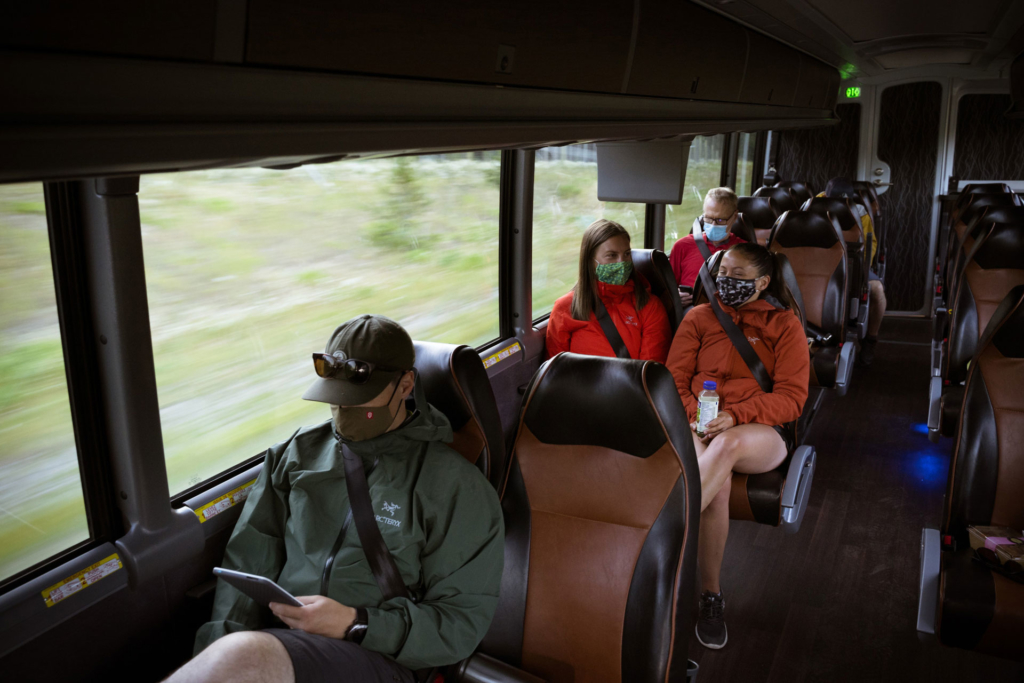
Committing early
CMH made the difficult decision to end our 2019/20 heli-skiing season in March, six weeks early. As we watched the COVID-19 pandemic unfold on a global scale in the weeks that followed, one thing became clear: the 2020/21 season wasn’t going to be business as usual. We needed to start planning.
“After some initial back-and-forth, it became apparent that simply discussing hypotheticals wasn’t going to cut it,” said Julia LoVecchio, Director of Marketing. “We needed to see in person if we could still operate and find out what worked and what didn’t. We decided early on to do a simulated trip and in typical CMH fashion, once we decided, we committed fully.”
With that, organizing a heli-ski dry run kicked off. Fifty CMH staff from across every single department in the organization rallied together to take part: 30 people would act as guests and 20 as staff. At least two people from each CMH lodge would be present, to ensure that important knowledge gleaned could be implemented at all lodges. A photographer and two videographers tagged along to capture behind the scenes and bring the experience to life for guests and staff.
“It was a big decision and a huge investment to fly 50 people to the lodge. It’s a big deal,” LoVecchio said of the commitment. “No one mandated us to do this. But as a business – especially as leaders in our industry – it was absolutely the right thing to do.”
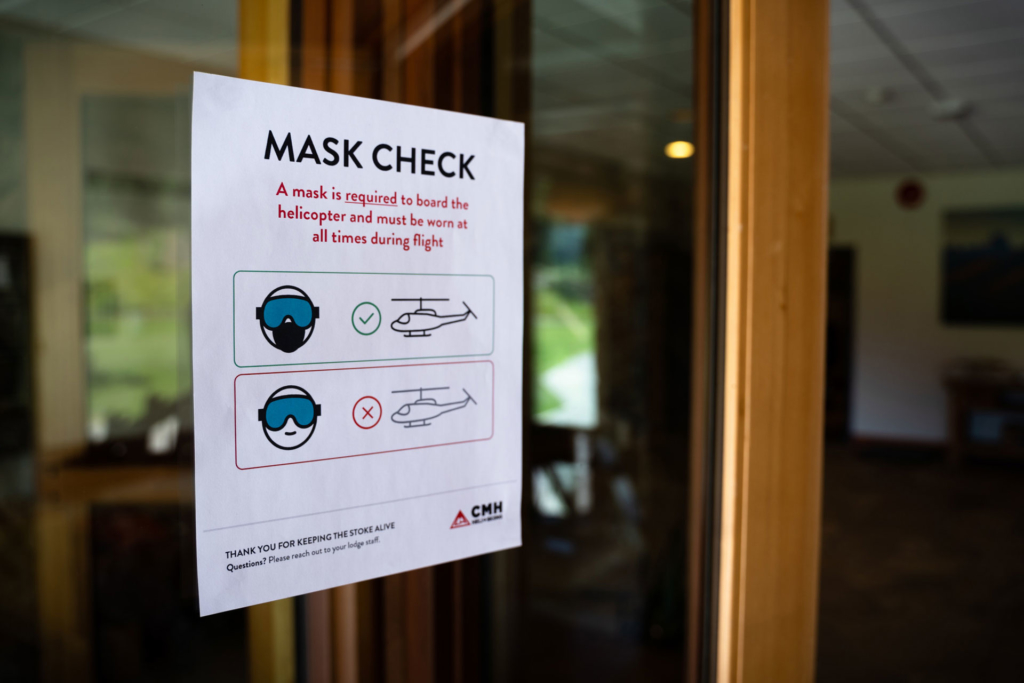
It’s in the details
Every CMH department, from transportation to operations, marketing to hospitality, began mapping out in excruciating detail what a typical heli-ski trip would entail for their teams. Using this roadmap and through the lens of COVID-19, departments crafted comprehensive operating procedures for every aspect of a trip, beginning and ending with guest transportation at the Calgary airport.
We’re talking every detail.
What would riding the bus look like? How would guests need to gather at the heli-pad? What needed to be in place on the helicopter? How should luggage be transported? What happens when the heli lands at the lodge? How do we serve meals? Can guests make their own coffee? How do we collect skis? How do ski pick-ups work? Can guests get a massage?
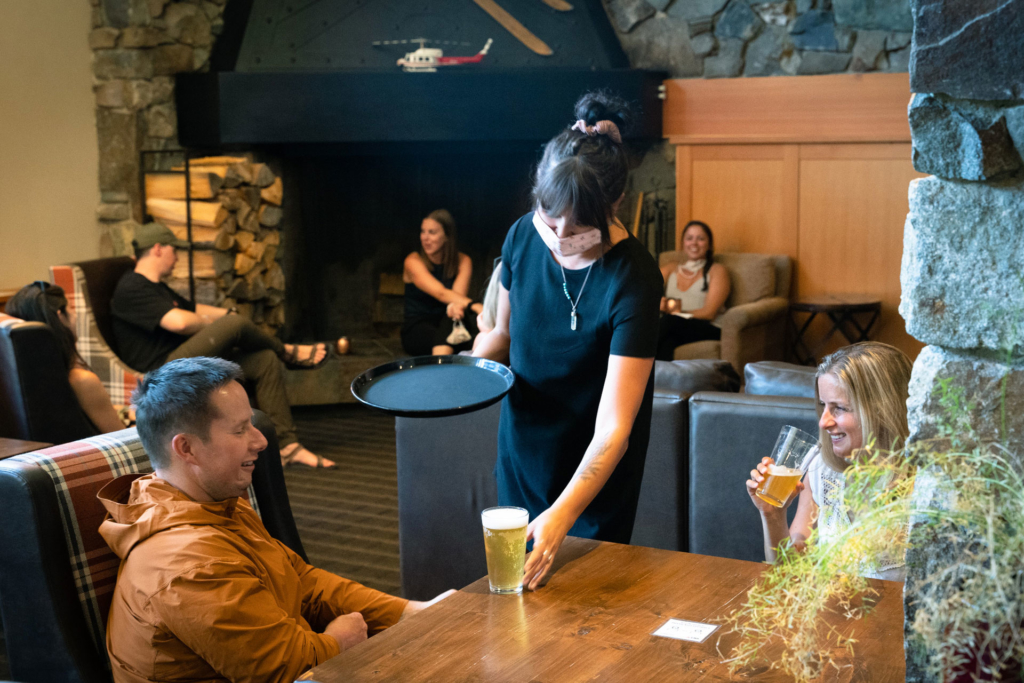
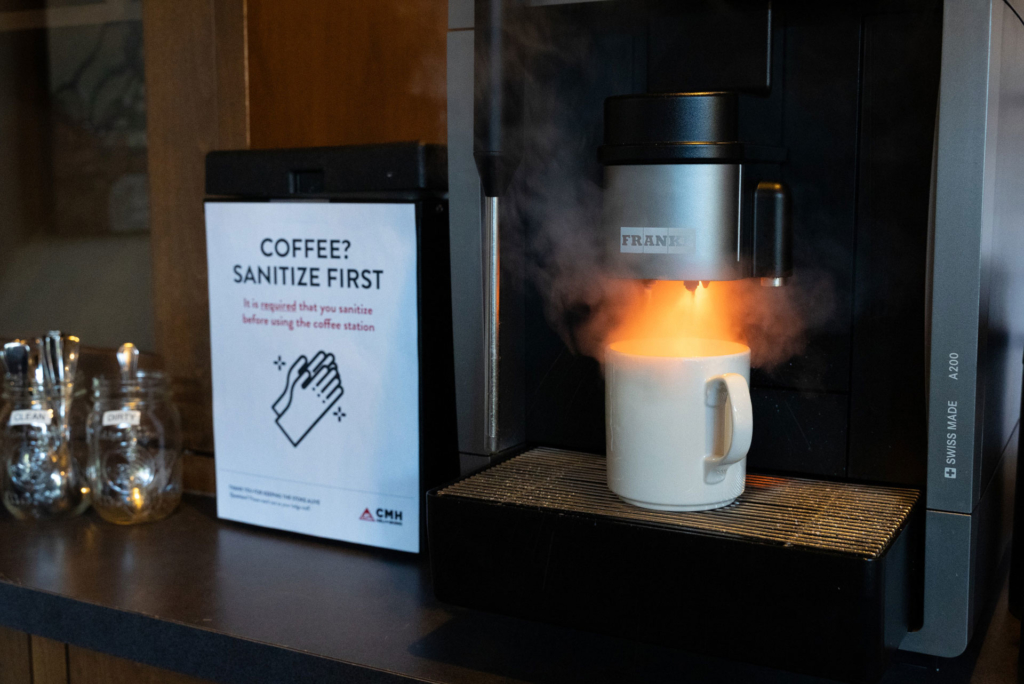
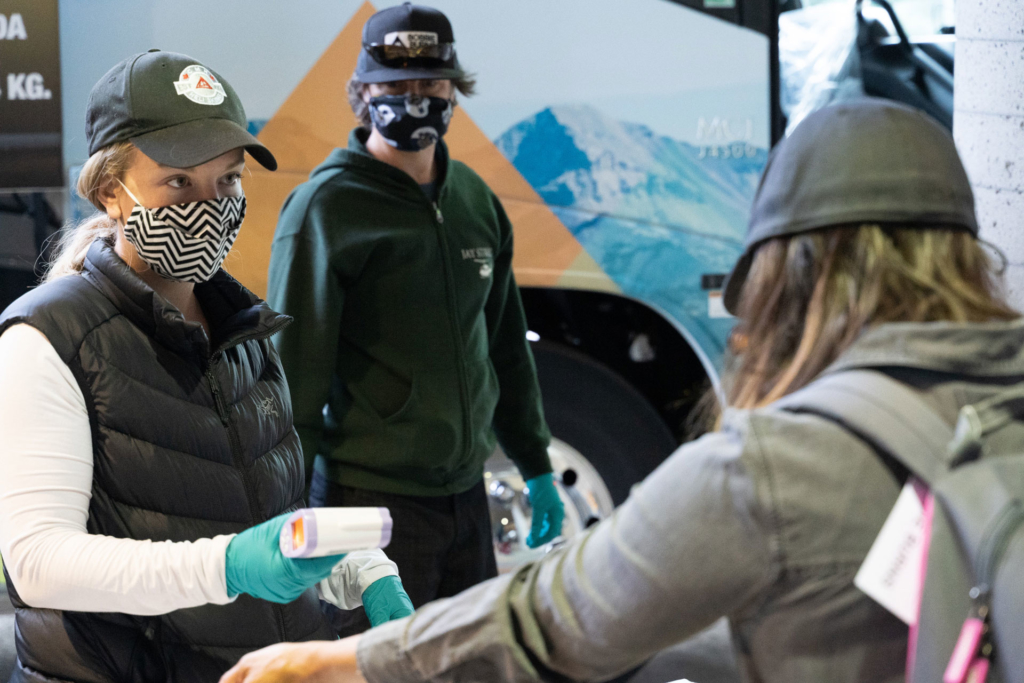
“We took tiny details, and then we split those into even tinier details,” said Carl Trescher, Area Manager for Bobbie Burns. “The level of detail was actually pretty mind-blowing.”
Hundreds of questions were examined from every angle over countless video conference calls between staff. The results were turned into protocols and procedures, which were then brought to the Bobbie Burns simulation trip where they were tested in person, dissected at length, and further sharpened. Throughout the process, we worked with our medical consultants and with guidance from Canada’s Chief Public Health Officer and BC’s Provincial Health Officer to ensure that our plan incorporates medically informed best-practices.
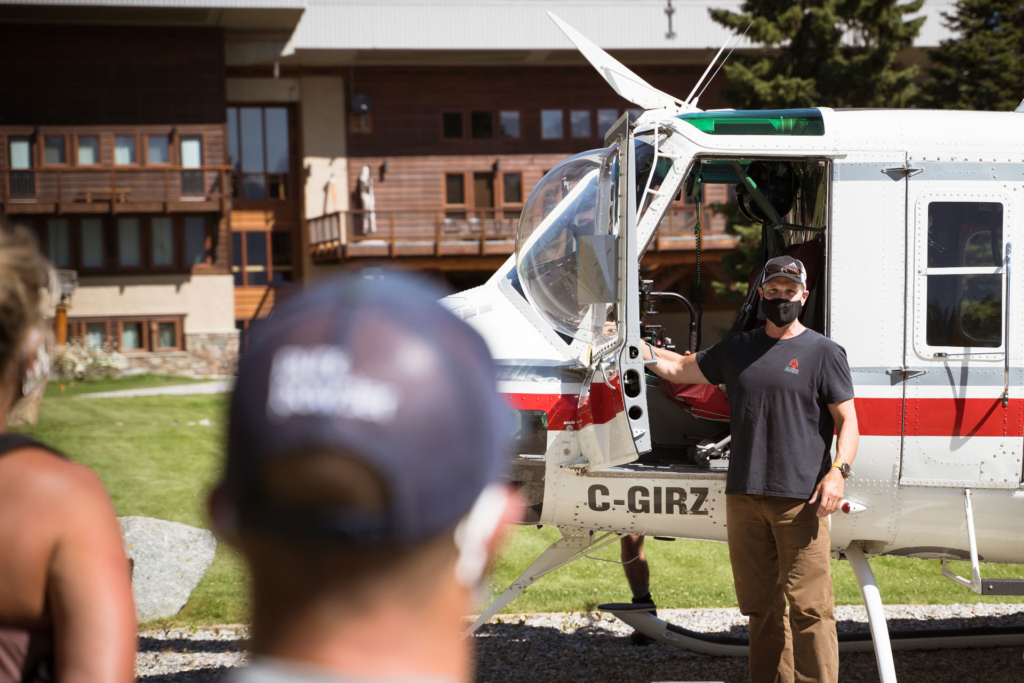
Practice makes perfect
Rob Rohn, CMH’s General Manager and Director of Mountain Operations, knows from decades of experience that simulations are a critical part of successful planning and preparation. This season’s approach to heli-skiing during COVID times is no different.
“No matter how diligent you are in developing protocols and procedures, until you actually put them into practice you won’t see how well they work, or not.”
CMH’s expert guiding teams are no strangers to repeatedly practicing a variety of situations in the field, to refine skills in preparation for real-life scenarios. They already do so with advanced first-aid, avalanche awareness, and other emergency preparations.
“There can often be unanticipated consequences or impacts that come to light in a simulation that require you to make further changes or modifications,” Rohn explained. “It’s important that we go into the coming season with our protocols figured out, so that our staff and guests can look forward to the upcoming season with confidence. We don’t want to be winging it!”
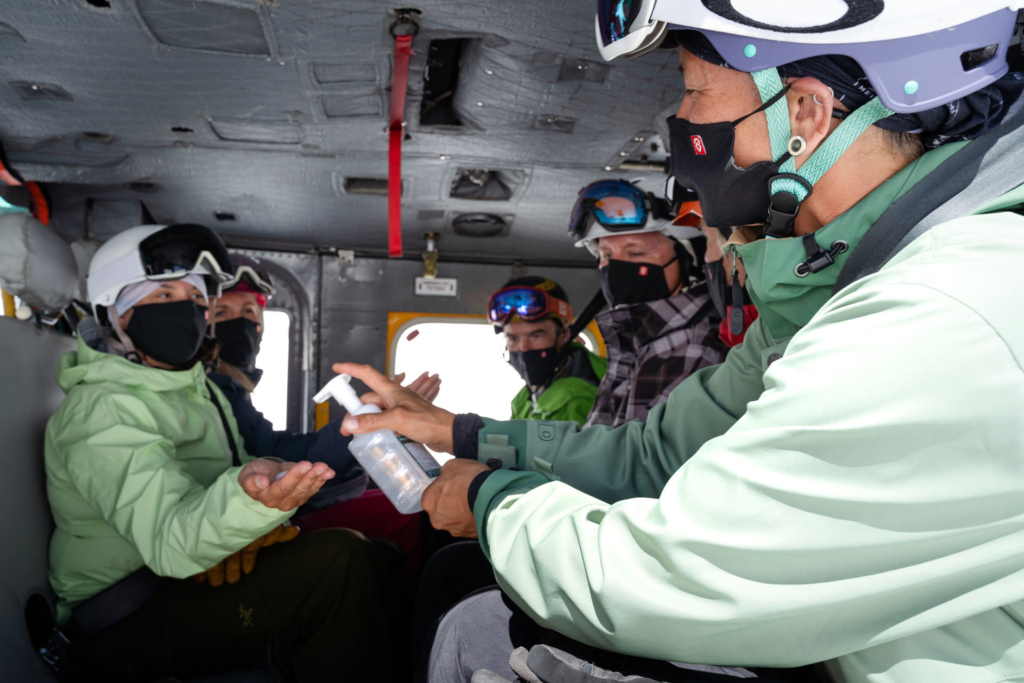
Go time
For many of the staff who participated in the simulation, gathering in a group after months of social distancing felt a bit like the first day of school. Excitement and nerves were aplenty.
“I personally was so excited to see everyone,” said Suzanne Belke, Director of Hospitality. “To bring together a few of the CMH family felt awesome.”
Trescher conceded that it initially felt a bit odd seeing everyone after such a long stretch of time spent distanced. “It was really nice but also a little strange to see everyone at first. I don’t know if we all felt sure how it was going to turn out.”
However, as initial jitters settled, everyone got to work. The helicopter lifted the first group towards the lodge, where staff were waiting to greet them.
The trip’s simulation included time spent in the field under a beaming August sun, where ‘guests’ practiced every movement relating to the ski experience. Heli-dropped with skis onto patches of summer snow, they practiced taking skis on and off, huddling for and loading the heli, climbing aboard, and everything in between.
As the sessions unfolded, one thing became emphatically clear.
“Once we started, we realized pretty quickly that it’s definitely possible to run the ski program. It’s possible to do this in a way that gives people the space needed to feel comfortable,” Trescher said.
“Yes, some things will be new, like needing wearing a mask on and around the heli, but actually, the ski experience wasn’t really that different. It’s pretty easy to make it happen.”
With the benefit of wide-open terrain, skiing might just be the ultimate physically distanced sport. This season, guests will be given custom masks, which will be required wherever physical distancing isn’t possible, such as on the helicopter and before and after pick-ups and landings. The pace will also be a little slower to accommodate safety protocols, especially in and around the helicopter.
“We’ve had to slightly shift our thinking from how we’ve traditionally done things,” Trescher said. “But one thing that’s absolutely going to stay the same is the overall ski experience. You’re still going to come and ski some of the best terrain in the world. That’s not changing.”
“While the experience may be slightly different this winter, it will still be the CMH that you have come to know and love.”
– Jeremy Levitt, CMH President
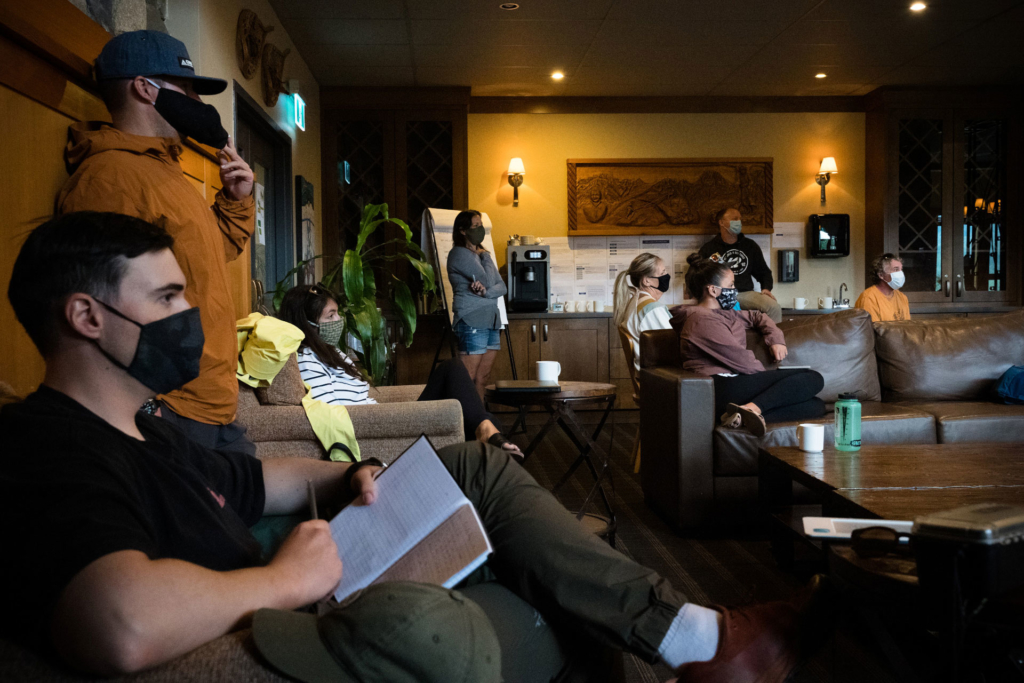
Biggest learnings
Although it was fairly seamless to work out how to operate the ski program, the biggest reality check during the test event happened around lodge life. Gathering indoors with multiple touchpoints and meeting spaces posed some serious challenges that at first seemed daunting.
So, the group broke the bigger challenges down into manageable chunks and practiced each element over and over, with open discussion in between. Everyone took part in the conversation, each bringing forward their own area of expertise. Everything from bar service to room cleaning was discussed.
From these talks, a plan for life in the lodge was born. Although things may change as the health situation evolves, here are a handful of things guests might expect to see:
- Directional signage throughout the lodge
- Eating with your social group (or travel bubble) at smaller tables
- Table service in the lounges
- Wearing a mask in the lodge when not able to physically distance
- Physically spaced stretch class
As Director of Hospitality, Belke was eager to ensure that the incredible CMH experience that has created a devoted following of return guests would still be present, even with new protocols in place.
“Honestly, it still felt like CMH – with a few changes. The atmosphere was still the same. The people are still the same. The level of camaraderie didn’t change. I know we can still have an amazing season.”
Jeremy Levitt, President of CMH, agrees. “While the experience may be slightly different this winter, it will still be the CMH that you have come to know and love. This test run in the Bobbie Burns reassured us of that.”
Safety evolution
Long-time guests of CMH have witnessed the constantly progressive health and safety landscape at CMH over the years.
“It’s been a process of continual improvement and learning since day one,” Rohn said.
“I believe a key to our success is the blameless culture we’ve built that encourages near-miss reporting and emphasizes organizational learning from those incidents. This is the most important factor in building an effective safety culture in a high reliability organization like CMH. The difference with coronavirus is that it’s outside our area of expertise, so we’re figuring it out as we go, along with everyone else. But we’re applying the same rigorous approach to managing that risk as well.”
Although it’s a massive undertaking, this is just the next chapter in the evolution of health and safety for CMH, said LoVecchio.
“We’ve adapted to a lot of changes that at the time seemed monumental: the introduction of transceivers, equipping every single guest with safety packs and radios, wearing helmets…I can think of quite a few. This is another step forward in our health and safety history.
“Ultimately, this is about all of us coming home safely. It’s important, and we are committed to executing it well. We’re ready.”
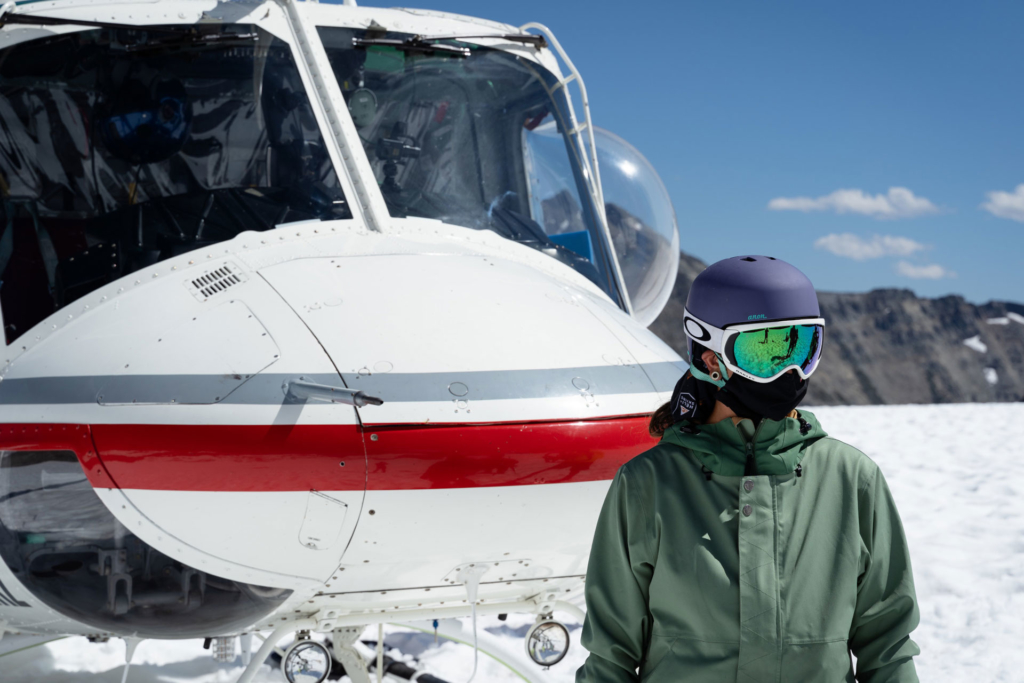
Staying flexible
Until a vaccine for COVID-19 is fully in place, this new reality will be part of the heli-skiing experience. As the global situation evolves, CMH’s procedures, protocols, and decision-making will evolve in tandem.
“These are times when we need to look to our values for guidance,” Rohn said. “As we navigate the tough decisions ahead, rest assured that safety will remain a cornerstone and we will do our best to act with the highest level of integrity.
“Disruptive events occur in a period of decades and eventually pass. Some are more localized, some global. Some precipitate cataclysmic change. Others fade as footnotes in the history books. CMH will survive this one, but some things will likely look different in the future. None of us are experts with the insights to single-handedly chart a course forward; we are going to figure it out together, with the help of our guests.”
>> Learn how our booking policies have changed with COVID-19